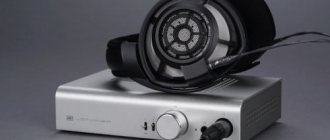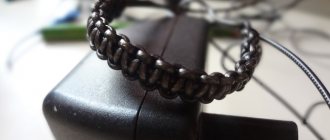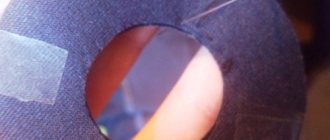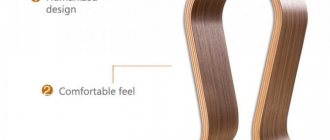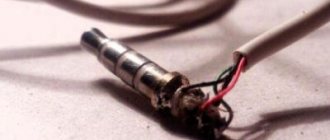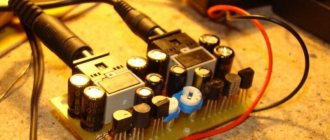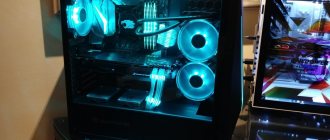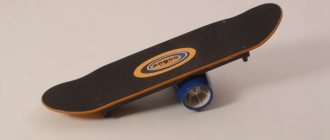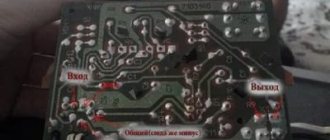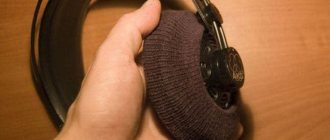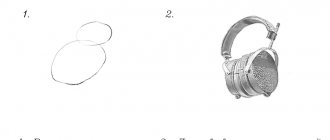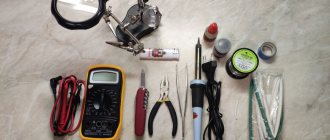We have already told you how to correctly read the characteristics of headphones. We hope that you figured it out and took note of this information. Today we’ll talk about what types of headphones there are, that is, we classify them according to various criteria.
According to acoustic design
Based on their acoustic design or design, all headphones can be divided into three types: closed, open and semi-closed (half-open).
- In closed-type
, the driver emits a sound wave only into the ear; they are sealed from the outside. Closed-back headphones are great for immersing yourself in sound. That is, people nearby do not hear the music played in the headphones, but the one who is wearing the headphones does not hear external sounds. This type of sound insulation is called passive.
Advantages:
- tight fit and excellent sound insulation;
- lack of audibility for others;
- juicy bass;
- detailed sound even at low volumes.
Flaws:
- the sound is not realistic enough compared to open headphones;
- unsafe for listening on a busy street;
- Listening for a long time may give you a headache.
- In open-back headphones,
the driver emits sound in all directions. In them, the listener is not isolated from the noise, just as those around him are not isolated from his music. Compared to closed-back headphones, open-back headphones will give you better sound quality because the sound is not distorted by reflections inside the sealed housing.
Advantages:
- the most realistic, uncolored and clear sound;
- safety, which consists in the ability to hear warning signals, for example, from a car;
- comfortable ear pads when your ears don’t sweat and your head doesn’t hurt.
Flaws:
- low noise insulation, which does not allow you to fully immerse yourself in listening;
- irritation of others with sound from headphones;
- The bass sounds worse than with closed headphones.
- Obviously, half-closed or half-open
(these are the same thing) headphones have partial noise isolation. These headphones have a closed cup with holes. Often, such headphones are purchased for professional activities, as they provide some sound insulation and realistic sound with the possibility of long-term use. However, you won’t be able to completely immerse yourself in the music, since they still let in some external noise.
Which headphones should you choose? The answer to this question depends on the tasks at hand and the acoustic environment in which the headphones will be used. If you plan to listen to music with headphones in noisy places (transport, studio while recording vocals or instruments), then it is better to choose closed headphones. When the sound from headphones does not bother anyone (for example, at home or when you work alone), but external noise can warn, for example, of danger (on the street), you can use open headphones.
Parts required for assembly
You can see what parts you need from your old headphones. Let's look at each node separately.
Plug for connecting to the connector of an electronic device
Headphones are connected to a mobile phone, player or computer using a plug. Its diameter corresponds to the size of a 3.5 mm jack. Another name for the plug is often used – mini-jack. The part is made in the form of a rod from composite elements. These are contacts that separate dielectric washers from each other. The number of contacts depends on the type of headset:
- 2 contacts have a monophonic headset plug;
- 3 pins on the stereo headphone plug;
- 4 pins on a stereo headset with microphone.
It is important to choose the correct plug according to the number of contacts, otherwise one of the elements of the headset may remain unconnected.
Cable
Headphones require a multi-core cable. The length is determined at your discretion. Any wire shape is suitable - round or flat. It is important that the cores match the number of parts of the headset. For simple headphones, a cable with 3–4 cores is suitable. To assemble a headset with a microphone, you will need a wire with 4–5 cores. It's not difficult to figure out how to connect them. Each core is covered with multi-colored insulation. Typically, the yellow wire is used for grounding, and wires with a different coating color are considered signal wires.
Speakers
The sound quality depends on the quality of the speakers. Depending on the type of radiation, a part can be low-frequency or high-frequency. Speakers are also divided into dome and simple. The latter option is most often used in inexpensive headphones. Simple speakers do not have much power and sensitivity, but they are reliable.
It is difficult to buy the part separately. It's easier to take speakers from a broken headset. It is important to consider their size. The speakers must fit inside the body of the future headphones.
How to distinguish original Beats headphones from fakes
Microphone
When making a headset for a mobile phone, you will need a microphone. It is better to bite it off with wire cutters along with a piece of wire from old headphones. The microphone is housed in a sealed plastic box. Additionally, there may be a call button or volume control. To avoid cutting the boxes, leave a piece of wire 3–5 cm long on the input and output sides. The main cable of the headset is soldered to these pieces. The color of the veins must match.
By design
Based on design, fit, and form factor, there are three types of headphones: full-size, on-ear, in-ear, and in-ear.
- Over-ear headphones
are also called surround, monitor or arc headphones. They have a headband and large ear pads that completely cover the ears without pressing them to the head. It's rare, but you can still find headphones without ear pads (for example, AKG K1000). Over-ear headphones are easy to use as they have a comfortable fit, but they are bulky and not suitable for listening with a headgear. Over-ear headphones are versatile. Closed monitor headphones do not have the highest noise insulation; their sensitivity is insufficient for portable sound sources, so they require amplification. In this regard, monitor headphones are used mainly indoors, for example, in recording studios.
- Over-ear headphones
are more compact, making them more portable. The ear pads are pressed tightly against the auricle, the speaker is located closer to the ear, so the sensitivity of on-ear headphones is usually higher than that of full-size ones. Over-ear headphones are ideal for short periods of use due to the pressure of the ear pads on the ears.
- In-ear (vacuum) headphones
are inserted directly into the ear canal, creating something like a vacuum there, and are held there thanks to silicone ear pads. Due to the proximity of the emitter to the ear, these headphones allow you to listen to music quietly while maintaining sound clarity. Such headphones are often used on the street, in transport, during sports, etc.
Advantages:
- compactness,
- passive noise isolation (closed headphones),
- versatility,
- high sensitivity.
Disadvantage: Listening to music at high volumes can damage your hearing.
- In-ear headphones (pills)
are headphones that are placed in the auricle rather than inserted into the ear canal. Most often they are open or semi-open, less often closed, but they still allow external noise to pass through due to their loose fit to the ear canal. The advantages include compactness and low price (with the exception of AirPods). Earbuds are convenient to use outdoors, but in transport the sound will disturb other passengers if the headphones are open.
Assembling new headphones with your own hands
So, you have received a complete set of working spare parts - it doesn’t matter whether they were obtained from old headphones or bought in a store. All that remains is to assemble them correctly, and you can start listening to music.
Plug
First of all, let's deal with the plug. Its attachment can occur in two ways:
- if it worked, then the piece of wire coming from it is simply connected to the rest of the cable;
- If a non-working plug is taken, it will have to be disassembled and thoroughly connected to a new cable.
Let's look at the second situation in more detail. The design of the plug is simple and not particularly deep - in principle, there is nothing to break there, so even if it no longer works as part of the headphones, it itself is quite functional and can be used again.
Beneath the plastic casing you will find a metal base of the plug from which two or more metal plates of varying lengths extend. In the case of conventional stereo headphones, there will be three plates - two contacts for transmitting the left and right channels and a contact for grounding. The third contact is the easiest to identify - it is the longest and is usually attached to the sleeve - the long part of the plug extending from the base.
We take a cable or one of the parts of the future cable and strip one of its ends. Under the braid you can find 3 or more often 4 wires, which are again stripped of insulation. After this, using a soldering iron, you should melt the transparent protective layer so that the current passes as freely as possible. After this, the wires are connected to their contacts - the channels can be safely swapped, this will not affect anything. The copper wires are twisted, wound to the contacts and secured with a blowtorch. Remember that the wires must be insulated from each other.
The plug body cannot be restored, but you can use anything instead - just wrap the twist with electrical tape or thread the plug into the tip of a syringe or a pen cap.
Cable
If the cable is assembled from several sections, its parts will have to be securely twisted together. To do this, the parts to be connected are freed from the braiding, and the wires are stripped of insulation. After this, the wires are twisted in a linear or spiral manner - detailed instructions are not needed here, this operation is easily performed on a whim. Then the twist is fastened with a soldering iron, the channels are isolated from each other and from the ground. The top of the twist is wrapped with electrical tape or tightened with heat shrink tape. The main thing is to choose a color that matches the braid so that the cable does not look too artisanal. As a last resort, you can make a homemade winding of thread or lacing over the plastic braid.
By emitter type
There are five types of drivers in headphones: dynamic, armature, planar, electrostatic and hybrid.
- Dynamic headphones
are the most popular, their technologies are constantly being improved and even at a low cost of headphones they produce high-quality sound. The dynamic driver in headphones works on the same principle as the speaker of an acoustic speaker. A magnetic coil is connected to the cone diffuser. When an electric current appears in the coil, a magnetic field appears around it, which interacts with the diffuser. The diffuser vibrates when the field (alternating current) changes, generating sound frequencies.
- Armature headphones
are rapidly gaining popularity due to the fact that, despite their compact size, they provide highly detailed sound. These headphones are often used for monitoring sound at live concerts. Due to the compactness of the reinforcement emitters, several of them can be inserted into one earphone, and each of them will be responsible for a certain frequency interval: HF, LF and mid.
- Electrostatic headphones
are high-end, elite headphones. Sound is generated when an ultra-thin membrane oscillates in a magnetic field between two stator arrays. This device is very expensive to manufacture; headphones require a powerful amplifier, but models with electrostats can boast the most accurate sound reproduction and fast response, which is highly valued by professionals and music lovers who are willing to pay a high price for the opportunity to enjoy high-quality sound.
- Planar headphones
include two subtypes: isodynamic and orthodynamic, which do not differ much in technology, which the average listener cannot distinguish by ear. Isodynamic headphones are similar in principle to electrostatic ones: there, too, a membrane with a flat coil applied to it oscillates between the stators, but the signal is supplied to the membrane itself, and not to the stators. Isodynamic headphones have the same fast response as electrostatic ones, but they lose in sound detail.
- Hybrid headphones
are a comprehensive solution when different types of emitters are combined in one housing. Typically, hybrid headphones have the form of in-ear headphones, which have built-in dynamic and reinforcement emitters.
Making your own simple headphones and headsets with a microphone
Cheap headphones quickly break down, but a branded headset is expensive. If you have several broken sets lying around in your closet, your find can be considered a success. From individual parts you can assemble a good headset. First, the spare parts are checked for functionality, then they begin to assemble them. Now we will look in detail at how to make headphones and what is needed for this.
By purpose
Depending on where and for what purposes you will use headphones, you can also distinguish several types.
- Stationary headphones
, which are commonly used at home. What are they? Most often they are full-size, open (less often closed) and high-impedance, if there is an amplifier.
- Monitor headphones
, used for work in the studio: full-size, high-impedance, for work on stage: reinforced in-channel.
- Gaming headphones
for gamers look like this: full-size with a microphone. They are not suitable for listening to music, since their purpose is to sit comfortably on the ears for a long time and have “raised” bass (for explosions, gunshots, etc.).
- Portable headphones
, which are used to listen to music from a phone, player, etc. They are compact, low-impedance with high sensitivity. The form factor can be any, as they say, according to taste and color...
- A headset
is a compact headphone with a microphone that can even have one “ear” and is used for hands-free conversations.
- Sports headphones
are most often in-ear, but recently they have been actively using on-ear headphones, namely AirPods, and you can also find on-ear headphones among them. Requirements for sports headphones: fit securely in (on) the ears when running without creating discomfort, have additional protection from water (headphones for swimming) and dust, be wireless. Sound quality is usually not given enough attention here.
All characteristics of headphones, even those that seem to relate only to design, affect the sound they produce. Select several models that meet your needs and tasks that you want to solve with headphones, then compare the selected models with each other through live listening. Only your ears will tell you the right choice. Happy shopping that won't disappoint you!
Main stages of headset assembly
The headphone assembly process consists of four stages:
- checking the integrity of the cable and the functionality of the speakers with a multimeter;
- soldering the wire to the plug;
- soldering bifurcated wires to the speakers;
- installation of parts inside the housing.
If you decide to assemble a headset for a mobile phone, one more item is added to the assembly process - soldering the microphone. All parts are taken from old broken headphones or bought in a store. The second option is not profitable, since the costs will exceed the cost of a new headset, and there is no point in assembling it yourself.
Recommendations: How to properly warm up your headphones and whether you need to do it
, Headphone wiring
, DIY headphone repair
HyperX Cloud Orbit S
- Microphone: detachable unidirectional with noise reduction.
- Connection: wired.
- Frequency range: 10–50,000 Hz.
- Resistance: 40 ohms.
- Sensitivity: 120 dB.
Inside the HyperX Cloud Orbit S headset, 100mm Audeze planar magnetic speakers with thin membranes are installed, allowing the headphones to transmit the audio signal with minimal distortion. Waves Nx technology allows the gadget to track head movements and create a fairly realistic acoustic picture with precise sound positioning in games. If necessary, you can independently calibrate the 3D audio settings using the Audeze HQ program.
The headset is equipped with a detachable microphone with a pop filter that smoothes out harsh sounds. The left ear cup houses controls that allow you to mute the microphone, adjust the volume, or change equalizer settings.
The kit includes three detachable cable options that are useful for connecting to a PC, Xbox One, PlayStation 4, Nintendo Switch or mobile devices.
Price: 18,990 rubles.
Buy
